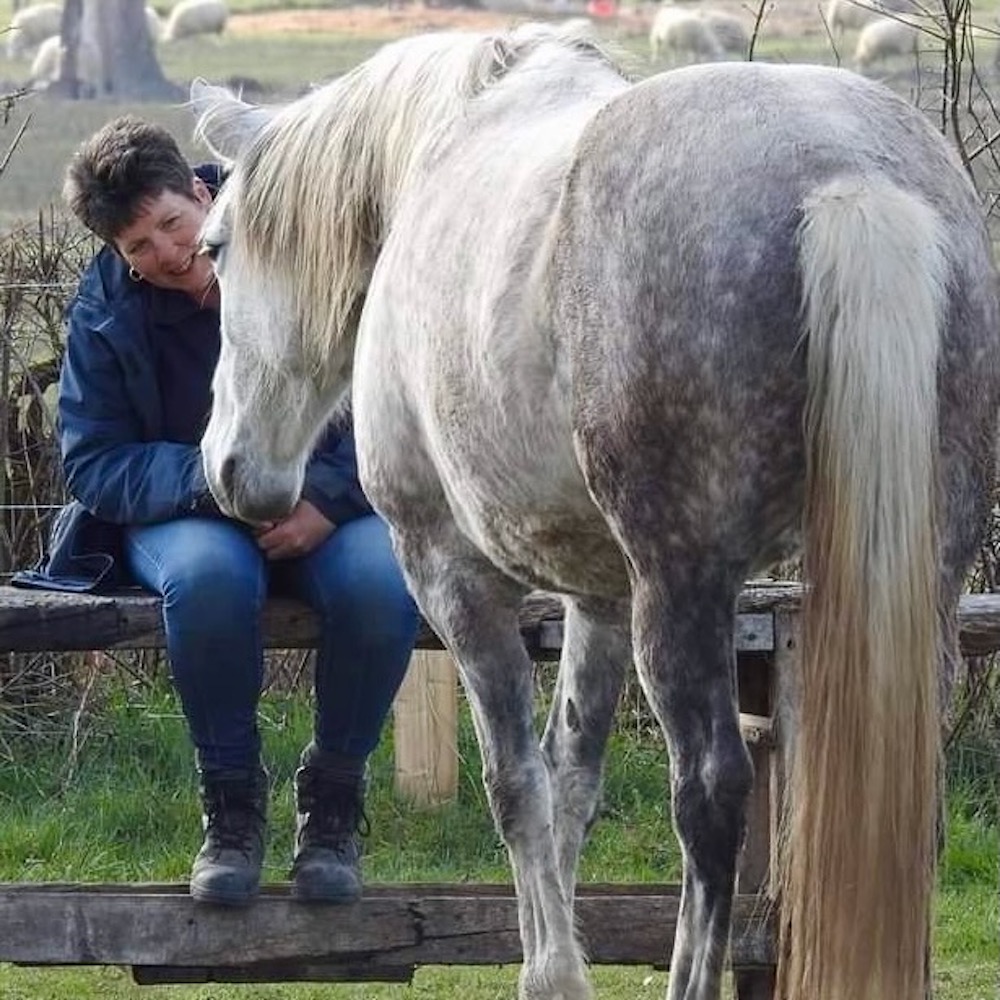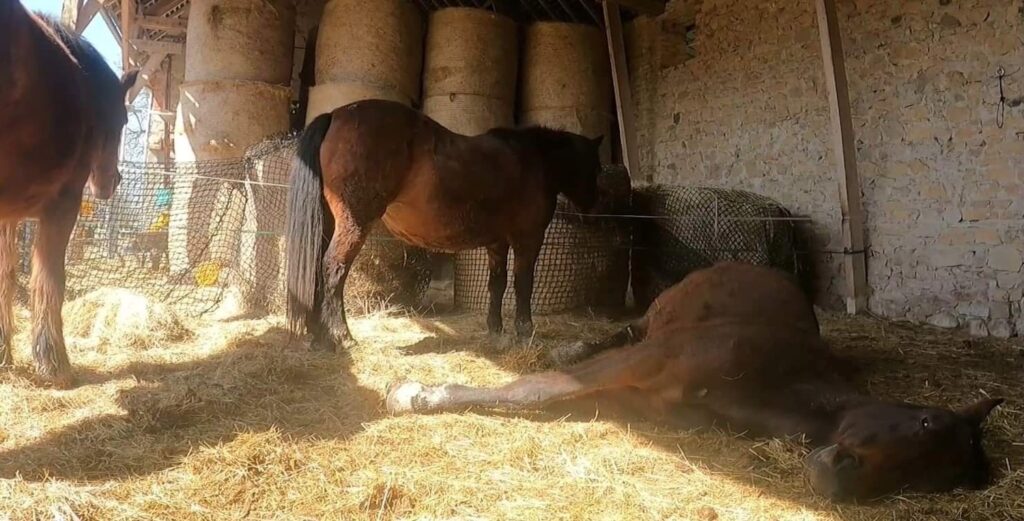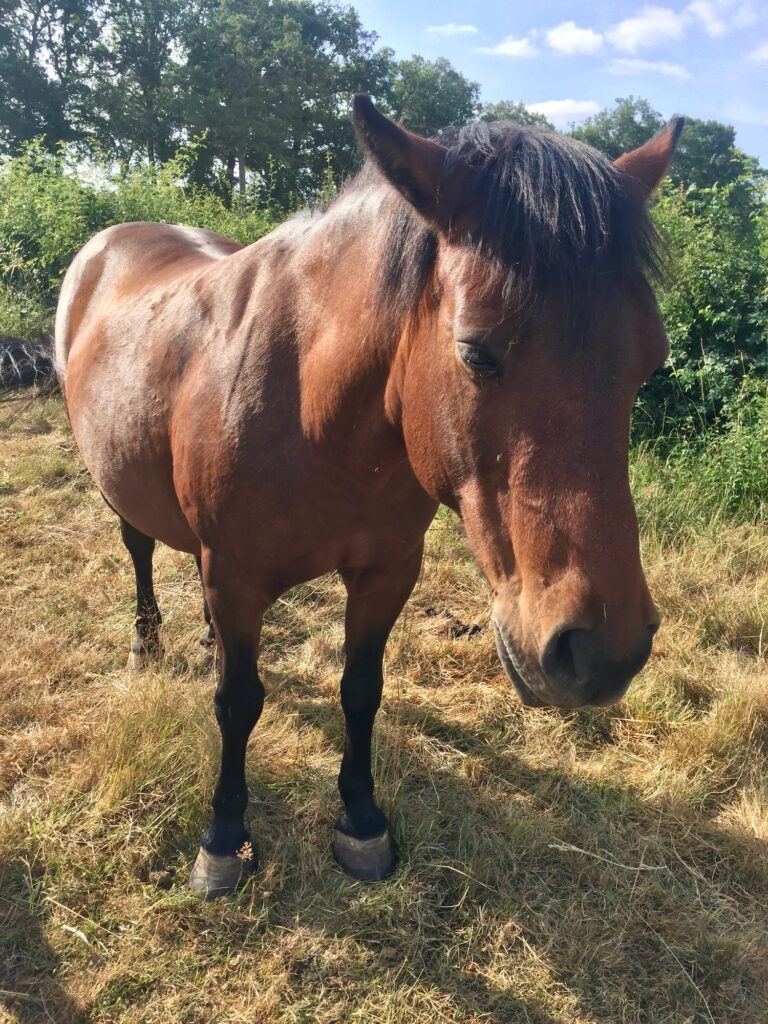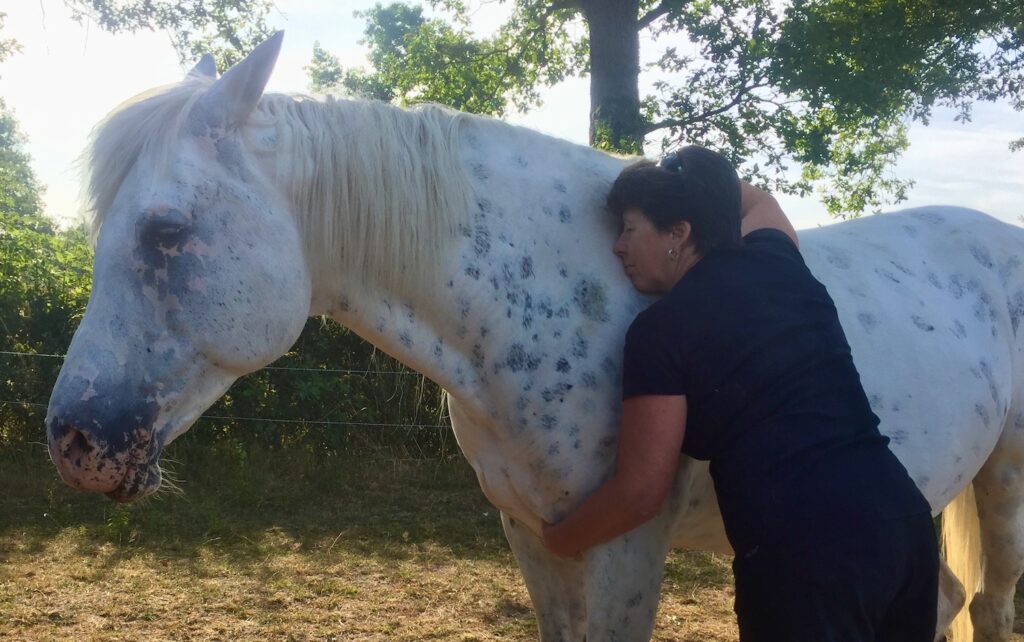Communication and connection with our horses through understanding feelings and taking a leap of faith in ourselves
In spring of 2018 a young lady stood next to me in a field as we looked at my herd of five, listening to me rambling away about all the things I thought needed sorting out with them, and when I shut up she asked me a question. That young lady is now the editor of this magazine. I had asked her for some help as I had become completely lost regarding my horses and often wondered why I had them.
The question was this: How do you feel?
That question has stayed with me now through a journey of finding out who I am, who each of the herd members are, and discovering all the wonderful reasons why we are together. I start every day with that question. Why? Because how I feel affects everything around me.
Before I can talk to the horses I need to acknowledge my own feelings about the day, understand they are my feelings and then let them whisper away as I walk around to say good morning, completely in the present moment, without a thought in my mind.

It is such a simple thing to write down. It is such a simple thing to read. For a lot of us though, our thoughts and mind tell us we can’t do this, and yet we know in our hearts we can. All we need to do is take a leap of faith in ourselves.
– Karen Bailey
My typical feelings a few years ago would go something like this:
“Isn’t it a lovely morning…oh no the ponies are looking a bit overweight so I better put their muzzles on. I hate muzzles. I feel so guilty that they can’t scratch or groom each other properly. Maybe I will just take them off the grass. That’s not good because now the herd are separated and they must hate that, and I am not sure Timmy is up for the challenge of being nice to Neige who is blind, and so on and so on”.
Just writing it down makes my body feel like it is scrunching up into a little ball of glass that is likely to break into tiny little shards at any point and explode all over the place.
About My Herd of Horses

As you can probably tell I have quite a mix in my family of equines. There is my thoroughbred, Timmy, who cribs and wind-sucks, even after years of living as naturally as possible. There is Chocolate, the oldest of the herd now in her twenties we guess (actual date of birth unknown). She suffers with insulin resistance but is not quite on the cushings scale.

There is Querida a 17 year old who has suffered with laminitis all her life and at one point had severe rotation. She also moved many times before finding us, and now even after four years of being with us still has her moments of distrust in her environment. Risada, the Lusitano is also prone to laminitis, and Neige, an Appaloosa, had a severe bout of Uveitis just last year that left her blind.
How does reading that feel? Overwhelming is what comes to mind. There have been times when I have sat down in my barn and just wondered ‘What next? ’. I know I am not the only one. The interesting thing though is I don’t rescue horses, although it reads like a list of leftovers from the world of horses.
This is not a sanctuary or a pension. I originally got Risada, and soon after Chocolate, as a sturdy riding horse with a pony companion. This is just a bunch of horses I have attracted into my life at different times over the last 9 years. And over the last four years I have learnt why.
What I Have Learned From The Horses
- Timmy helped me realise how self-protective I was, how I would put my feelings in a box and close the lid tight.
- Chocolate showed me how I always worried about things that hadn’t happened yet.
- Querida showed me how to break free of recreating the past over and over.
- Neige showed me how I needed to stop over thinking.
- Risada showed me how control of any kind is pure illusion and it was time to let down my defences.
And all of these were only one layer, the spiral goes around and around, acknowledging behaviours and feelings that are irrelevant to living in the present.
The horses helped me find my present, my spirit, my being.
They showed me the next steps and I now have found a gift within, that is allowing me to help each of them to let go of their past anxieties and traumas. We explore many questions together, for example:
Is laminitis a habituated chronic physical response to a feeling?
Think of it like this. An event occurs in childhood that brings up a feeling of nervousness. The body responds by clenching its guts. A different event occurs later that brings up the same feeling and the body responds in the same way. It has learned that this is the response to feeling nervous. It now starts doing that every time the nervous feeling comes up, even slightly. Over the years irritable bowel syndrome (IBS) develops. Mind and body learn to live with it, coping when it is bad and feeling relieved when it isn’t. Would we connect the IBS with a habituated behaviour we have developed from an event that occurred years ago? Unlikely, but changing perspective can often start to make a different sort of sense.
How We Share Our Feelings
So is there an event that occurred in a horse’s life that had a feeling associated with it, that later caused a physical response that then became chronic? I believe so, and I am very grateful to be in a place where I can start to have those conversations with the herd. We can only have these conversations through sharing feelings. In order to share feelings two things have to happen and they can both be described with one word. Trust.
Firstly we have to have absolute trust in our self and what we are feeling. If we can understand our own feelings, then any other feeling is coming from somewhere else.
Secondly a horse has to trust us to share his/her feelings. Most of us struggle to verbalise our deepest feelings with our family and closest friends. We cannot expect a horse to share his feelings with us, a human being, when it is likely that a human was involved in some way in the event that traumatised him or her in the first place. It would be a bit like verbalising a fear of snakes to a cobra.
A horse will trust when he knows he is being listened to, and when we don’t bring our concerns to the table. Once the trust is there we can have the conversation using feelings as the words. If we trust ourselves we will be able to interpret the feeling into something our human mind can work with. We can also learn to share feelings back to create a two way conversation.
My Journey With Timmy
Timmy and I are on our own amazing journey now, sharing trauma feelings and starting to release fears and feelings that caused the behaviour to start with. Once we developed a clear feeling of mutual trust, and once I learnt to not bring my judgements, worries or expectations to the table when we were having a conversation about his feelings, he started to share.
The first time he shared his trauma with me it was overwhelming. It was a feeling of sheer terror that he shared. So overwhelming I had to walk away to allow it to dissipate so I could continue the conversation with him. We are continuing on our journey and his self-confidence is growing. He trusts that he can share his feelings now and know they are not going to be ignored. He is very sensitive and we have to allow each layer to peel away at its own pace.
Teaching Trust
Working with Timmy at this level is also taking me to a new place; a place where I am learning, in a community of like-minded people, how to teach other humans to create this level of trust and move towards helping people help their animals release the traumas they may have experienced in their lives, and create a relationship that is based in trust, and is lived in the present.
It is a joy and a pleasure to share these little stories, and if I can summarise by saying one thing to close this article:

When you wake up tomorrow, look in the mirror and ask yourself ‘How do I feel today? Am I in the present, in the past, or worrying about the future?’
If you are in the past or the future, acknowledge it, shelve it for later, and go and greet your horses completely in the present.
– Karen Bailey

